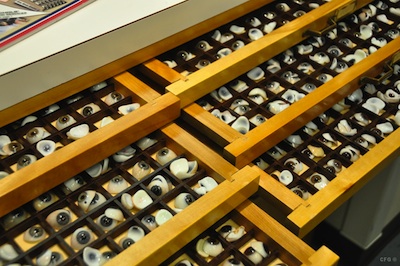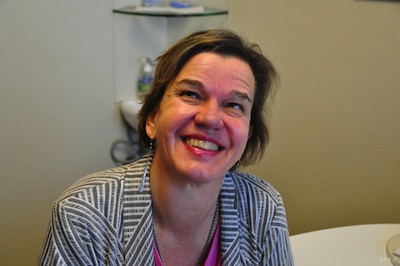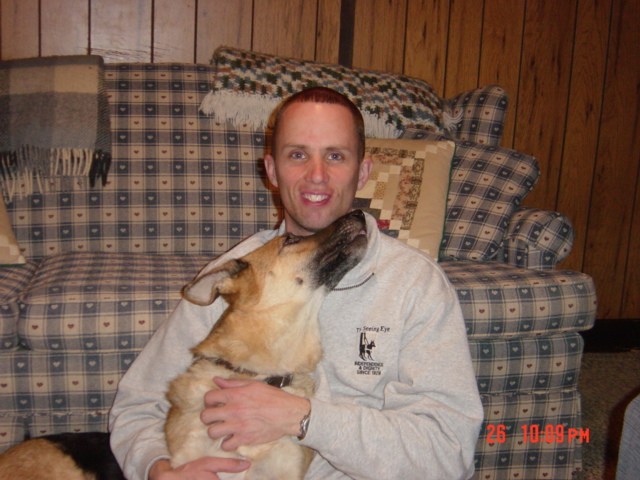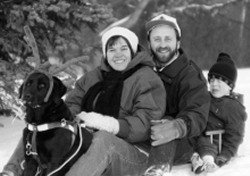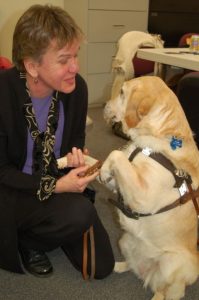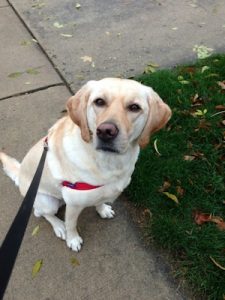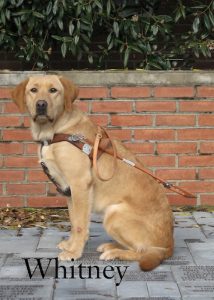One Thing You May Not Want to Know About Me
July 31, 2021 • 17 Comments • Posted in blindness, guest blog, Seeing Eye dogsI have one fake eye.
Eye surgeons did all they could to restore my vision when retinopathy set in 35 years ago. One of my eyes is still intact, but the other one shrunk so much from all the surgeries that I can’t hold that eyelid open.
I wear a prosthesis in that eye. Every once in a while it needs a polish, and over these past two years appointments were not possible.
But now they are, so this Monday I’m off to the ocularist.
Way back ten years ago, after my Seeing Eye Dog Harper had to retire early, our friend Chuck Gullett was kind enough to accompany me to my regularly scheduled ocularist visit. Chuck wrote a guest post afterwards, and I reread that post this morning to remind myself what to expect at Monday’s appointment. Know what? That post is so good I’m publishing it here again.
A trip to the ocularist
by Chuck Gullett
Between Harper’s retirement and Whitney’s training, I had the great opportunity to accompany Beth as her “Seeing Eye Chuck” for a visit to the ocularist. The ocularist, as I learned, is the place to go when you need a new glass eye or just a little glass eye maintenance. The ocularist’s office, on the 16th floor of the Garland Building in Chicago, has a spectacular view of Lake Michigan, Millennium Park and Navy Pier. Ironically, the hundreds of eyes in the office are all neatly arranged in drawers and never able to enjoy the view.
On this visit, Beth was going in for a routine cleaning. As an observer, the process is fairly straightforward…
1) Remove glass eye with a device that looks like a miniature Nerf suction cup dart.
2) Try not to make an immature sucking sound as the eye is being removed.
3) Sit back and chat until the eye returns from the onsite laboratory, which I pictured to be somewhat like Grandpa’s lab from the “Munsters.”
When the ocularist returned with the beautifully polished eye, I asked a few questions and Beth talked him into showing me the lab and explaining the cleaning process. What I got was an enthusiastic lesson in the history, making and care of the good ol’ ocular prosthesis, or what we commonly refer to as a glass eye. First off, the eye is not even made of glass. Modern glass eyes are actually made of acrylic, which is extremely durable and more cost effective to manufacture.
The guys in the lab area told me about the heroic GI’s returning from WWII having a large demand for glass eyes. The glass eyes would tend to break by accident or “accidentally” around the time a GI wanted to visit the big city. A shortage in high quality imported glass and the cost of replacement eyes prompted the government to find a better material to make artificial eyes. Now, we have the modern version in durable acrylic.
To give you an idea of how durable the eyes are, Beth has had the same peeper for 25 years and the last time she had it polished was 4 years ago. Each eye is hand crafted for its owner and is a true piece of art. I looked through the drawers of sample eyes and the level of detail is really stunning. The blood vessels are recreated with silk threads while the pupil and iris take laborious hours to hand paint so they look realistic. The ocularist had notes from Beth’s last two visits where they recommended that she get fitted for a new eye, but Beth just smiled and said, “Yeah, I kinda like this one.” I like that one, too. I had no idea that Beth even had a glass eye. One eye is real and one is not. You can try to guess which is which, but good luck.
Anyway, I also learned that the cleaning/ polishing process is much like polishing jewelry. There is a buffing wheel and several different compounds to remove build-up and leave a nice smooth surface. The ocularist works the eye until it is just right, then rinses it off and you are ready to go. I associate the feeling of a freshly polished glass eye like the smoothness your teeth have after a visit to the dentist.
All in all, it was a great afternoon. I got to spend some quality time with a friend, feed my odd curiosity with something out of the ordinary and learn something new.
Bonus: besides being a terrific photographer and friend, Chuck’s also a solid, honest real estate agent. So if you’re in the market…
